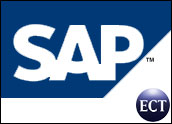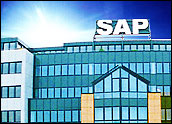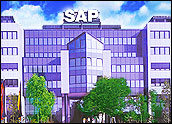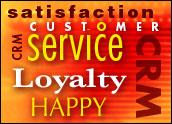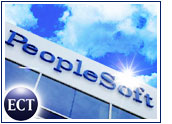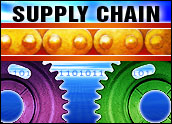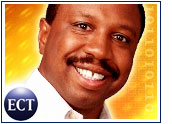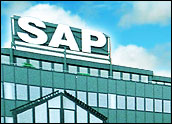
SAP has announced that its second quarter earnings rose by 15 percentin software revenue, as well as by 15 percent in operating income and 14percent in net income.
The numbers are close to what the company had anticipated when itestimated its performance in early July. It released predictions at thattime in order to allay analyst fears brought on by reported slowdowns atPeopleSoft, Siebel and other SAP competitors.
SAP Vice President of Global CRM Initiatives Darc Dencker-Rasmussen told CRM Buyer that it is especially exciting for him to see how much CRM has contributed to the company’s overall growth.
“CRM is growing faster than our other segments,” he noted. “We see thisas a continuing trend as well.”
Onwards and Upwards
In its announcement, SAP reported increases across the board. Softwarerevenue was US$596 million, compared to $530 million in the same perioda year ago. In constant currency, U.S. revenue increased 70 percent.
Other good news for the company, according to SAP, was an administrativecost decline of 6 percent, to $114 million. The company’s six-monthoperating margin was 22 percent in 2004, a gain of 2 percentage pointsover last year’s second quarter.
The company noted that it has continued to gain worldwide share againstits competitors. SAP considers its competitors, which it calls its “peergroup,” to be Microsoft’s Business Solutions segment, Oracle’s businessapplications group, PeopleSoft and Siebel.
In a statement regarding the results, Henning Kagermann, CEO of SAP,said, “We continue to experience a sound economic environment in the U.S.while our European business is showing signs of stabilization in a moresubdued economy.”
Success Through Upgrades
According to Dencker-Rasmussen, a major component of SAP’s robust secondquarter was the release of mySAP CRM 4.0 last June.
“That release was the result of a huge investment in time andresources,” he said. “It required the largest effort and focus that thecompany has ever put into a single release in its history.”
The result, he said, was a welcome reception from analysts and customersafter it hit the market. Once it was available, some customers that hadbeen holding off on upgrades made the leap and raised SAP’s revenuesconsiderably. Dencker-Rasmussen said, “We began many implementationsafter the release.”
Beagle Research founder Denis Pombriant noted that SAP also did manythings right in terms of getting the word out about 4.0. “They’re doinga great job of migrating customers to the new platform,” he said.”They’ve also drawn new customers in through this product. It remains tobe seen whether it will catch on completely, but they’re going to dowell with it.”
More Efforts Ahead
In order to keep growth at a steady clip, SAP is now planning to assistcustomers in capitalizing on all of 4.0’s capabilities, and expandingthe product’s recognition in specific industries.
Dencker-Rasmussen said that an additional productivity pack was releasedearlier in the year, and there is another scheduled for later this yearto increase extensions to the product. “We’re not letting up,” he said.”Many of the capabilities aren’t being utilized, and we’re making that apriority for this year, to get the word out about how much the productcan do.”
Part of that effort involves assisting customers in customizing theapplication to suit their specific industries. Media customers may wantto draw on 4.0’s intellectual property capability, for example, Dencker-Rasmussen said.
In some cases, the effort will involve modifying how 4.0 is delivered.Dencker-Rasmussen cited a pharmaceutical company that purchased 3,000mobile devices that will use mySAP to get information to employees usingthem away from the office.
Dencker-Rasmussen said SAP also feels confident about the continuingpopularity of CRM and the prospects for its future. He noted that manyexisting customers, such as Adobe Systems and Clorox, have begun to buysubstantial numbers of new licenses to augment the licenses they alreadyhave.
“We think there are users across the enterprise that would benefit fromCRM but aren’t doing so yet,” he said. “So, we think the potential forgrowth is substantial.”

